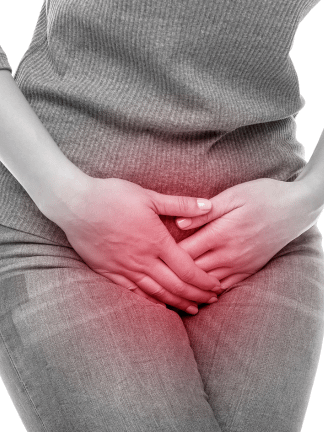If you are a woman who has or has had a vaginal yeast infection, you are not alone. Vaginal yeast infections affect up to 3 out of 4 women at some stage in their lives.1 A vaginal yeast infection, also called vaginal candidiasis (thrush), is an overgrowth of fungus on the skin surrounding the vaginal opening.1,2
- A variety of factors can affect your chance of getting a yeast infection – particularly factors that affect the normal vaginal flora or pH level1-3
- Vaginal yeast infection can result in vaginal discomfort and white cottage cheese like discharge1,2
- Vaginal yeast infections are treatable conditions4
Vaginal candidiasis (thrush) causes and risk factors
Vaginitis refers to conditions that cause inflammation or irritation of the vagina. Vaginitis can be caused by bacteria, fungi, other organisms, or chemicals. Yeast infections such as vaginal candidiasis (thrush) is a common type of vaginitis.6
There are a bunch of reasons why someone might get vaginal thrush. It could be because of changes in vaginal pH, a change in the usual bacteria in the vagina, being on your period, going through pregnancy or menopause, a weakened immune system, uncontrolled diabetes, taking birth control pills that bump up estrogen levels and using antibiotics.1-3 Around 20% of women naturally carry the fungus responsible for vaginal candidiasis, Candida, in their vagina without showing any signs or symptoms.4
The normal vaginal flora is largely made up of Lactobacillus species, which keep the pH acidic, and provide a first line defense against invading ‘bad bacteria’ in the vagina, which may cause infections and resulting symptoms.3 When the balance of Lactobacilli is thrown off you can get an overgrowth of fungus, such as Candida, leading to a yeast infection.6,7
Yeast infection symptoms
Yeast infection symptoms can vary from annoying to quite bothersome, and they might include:1-2
- Feeling itchy and irritated around the vagina
- A burning feeling, which may be more bothersome during sex or while taking a pee
- Redness and swelling around the vaginal opening
- Pain and soreness in the vagina
- A vaginal rash
- Yeast infection discharge
- A thick, white or yellow discharge from the vagina that may look like cottage cheese but doesn't smell
- A thick, white or yellow discharge from the vagina that may look like cottage cheese but doesn't smell
Treatment and proactive management are possible
While dealing with a yeast infection can be uncomfortable, it's a treatable condition. So, unless you have a severe infection that needs medical attention you can focus on self-care and avoidance.
Suggestions to help prevent yeast infections
Help prevent vaginal yeast infections with some of the following methods:1,2,4,7
- Wear cotton underwear that doesn’t fit too snug
- Take probiotics
- Only take antibiotics when necessary because they can increase the risk of getting a yeast infection
- Avoid hot tubs or very hot baths
- Avoid staying in wet clothing such as swimwear or workout clothes for too long
Treatment
- Antifungal medicine can be used to treat vaginal candidiasis.4
- Consult your doctor to discuss the best treatment options for your condition
Complicated vaginal yeast infections
You could be dealing with a more complex yeast infection if:1,4
- Your symptoms are intense, featuring widespread redness, swelling, and itching that result in tearing, cracking, or sores
- You experience four or more yeast infections within a year
- Your infection is due to an uncommon type of fungus
- You're pregnant
- Your diabetes isn't well-managed
Treatment for more complicated vaginal yeast infections
- Taking an antifungal medicine as prescribed by your doctor.2,4
- Using other treatments inside the vagina, as recommended by your doctor.4
Povidone-Iodine (BETADINE®) Antiseptic Feminine Wash over-the-counter product contains Povidone-iodine, which is proven to kill not only fungi but bacteria and viruses too based on in-vitro studies.5,8
It is used as an itch reliever for common external irritation due to infections and as treatment of vaginitis.5
Always read the label before use. This article is for educational purposes only. If symptoms persist, consult your doctor.
ASC I0029P060325B
ASC I0029P060325B

